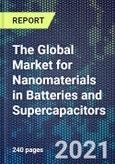With global energy demands ever-increasing, allied to efforts to reduce the use of fossil fuel and eliminate air pollutions, it is now essential to provide efficient, cost-effective, and environmental friendly energy storage devices. The growing market for smart grit networks, electric vehicles (EVs) and plug-in hybrid electric vehicles (PHEVs) is also driving the market for improving the energy density of rechargeable batteries.
Rechargeable battery technologies (such as Li-ion, Li-S, Na-ion, Li-O2 batteries) and supercapacitors are among the most promising power storage and supply systems in terms of their widespread applicability, and tremendous potential owing to their high energy and power densities. LIBs are currently the dominant mobile power sources for portable electronic devices used in cell phones and laptops.
Although great advances have been made, each type of battery still suffers from problems that seriously hinder the practical applications for example in commercial EVs and PHEVs. The performance of these devices is inherently tied to the properties of materials used to build them. Nanotechnology and nanomaterials will play an important role in all aspects of the energy sector.
Lithium-ion batteries have shown great promise in portable electronics and electric vehicles due to their long lifespan and high safety. However, hurdles relating to the sluggish dynamics and poor cycling stability restrict the practical application. Nanostructured materials, due to their significantly decreased particle size, effectively address these issues.
Advantages of nanomaterials include:
- Nanoscale shortens lithium-ion diffusion length.
- New reactions at nanoscale are not possible with bulk materials.
- Nanoscale combining with electronic conductive coating improves electronic transport.
- Decreased mechanical stresses due to volume change lead to increased cyclability and lifetime.
- Nanoscale enhances the electrode capability of Li storage.
- Ordered mesoporous structure favours both Li storage and fast electrode kinetic.
- Nano-structure enhances cycle stability.
Nanomaterials are also finding application in Lithium-sulfur (Li–S) batteries, sodium-ion batteries, lithium-air batteries, magnesium batteries and paper, flexible and stretchable batteries. Nanomaterials, especially carbon nanomaterials and silicon nanowires, have been widely investigated as effective electrodes in supercapacitors due to their high specific surface area, excellent electrical and mechanical properties.
Applications of nanomaterials in batteries and supercapacitors include:
- Electrodes in batteries and capacitors.
- Anodes, cathodes and electrolytes in Li-ion (LIB) batteries.
- Inks printable batteries and supercapacitors.
- LIB cathodes.
- Anode coatings to prevent corrosion.
- Nanofiber-based polymeric battery separators.
- Biodegradable green batteries.
Nanomaterials covered in this report include:
- Graphene
- Multi-walled nanotubes (MWCNT)
- Single-walled carbon nanotubes (SWCNTs)
- Fullerenes.
- Graphene quantum dots.
- Nanodiamonds.
- Carbon Nanofibers.
- Si Nanowires.
- Silicon nanopowders.
- Quantum dots.
Report contents include:
- Battery and supercapacitor market megatrends and market drivers.
- Types of nanomaterials utilized in batteries and supercapacitors.
- Global market for in tons and revenues, historical and forecast to 2030, by nanomaterials types
- Markets for nanomaterials in batteries and supercapacitors including electric vehicles, UAVs, medical wearables, consumer wearables and electronics.
- 165 in-depth company profiles. Companies profiled include Amprius, Inc., Anaphite, BAK Power Battery, BeDimensional, Bodi Energy, Dongxu Optoelectronic Technology Co., Ltd., Vaulta, Graphenenano, Log 9, HE3DA sro, HPQ Silicon Resources Inc., NBD, Nexeon, Sila Nanotechnologies, Volexion, VoltaXplore Inc.- and many more.
This product will be delivered within 1-3 business days.
Table of Contents
Companies Mentioned (Partial List)
A selection of companies mentioned in this report includes, but is not limited to:
- Amprius, Inc.
- Anaphite
- BAK Power Battery
- BeDimensional
- Bodi Energy
- Dongxu Optoelectronic Technology Co., Ltd.
- Vaulta
- Graphenenano
- Log 9
- HE3DA sro
- HPQ Silicon Resources Inc.
- NBD
- Nexeon
- Sila Nanotechnologies
- Volexion
- VoltaXplore Inc
Methodology

LOADING...








